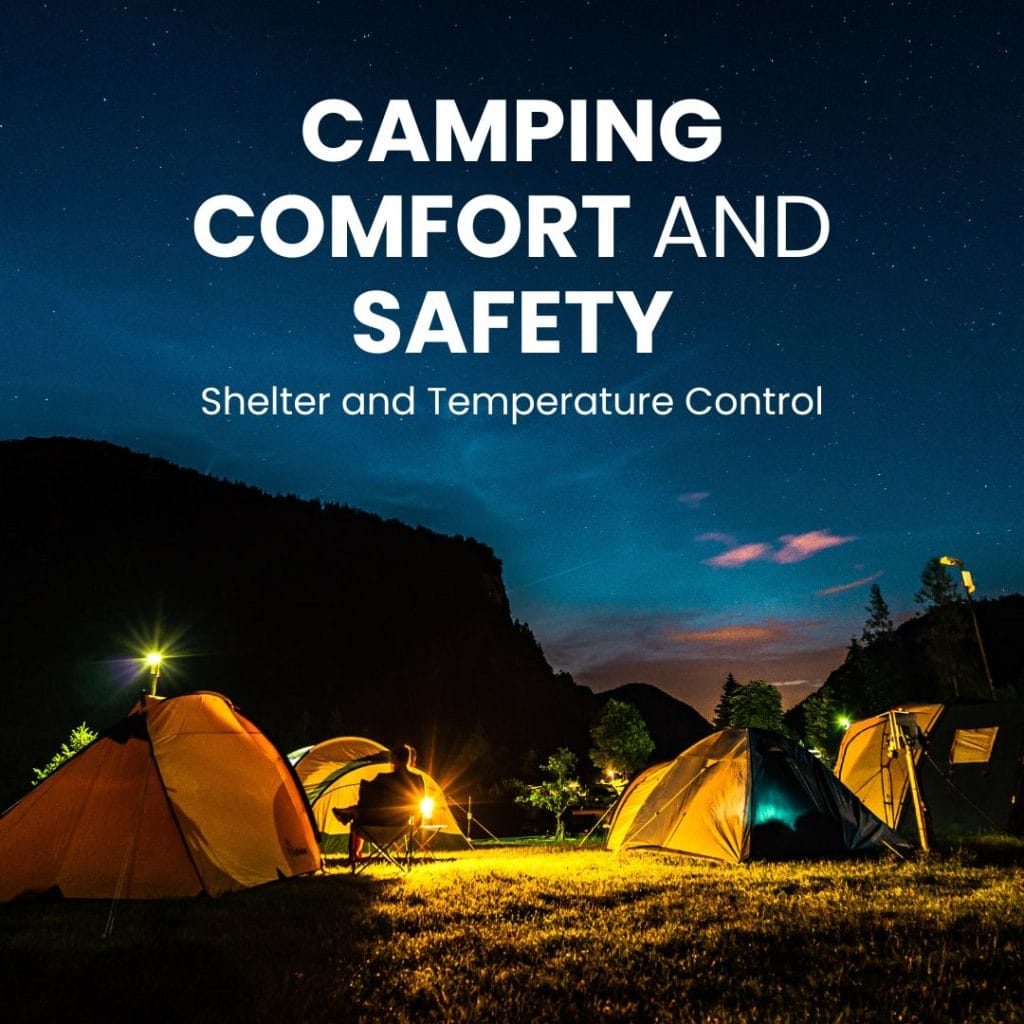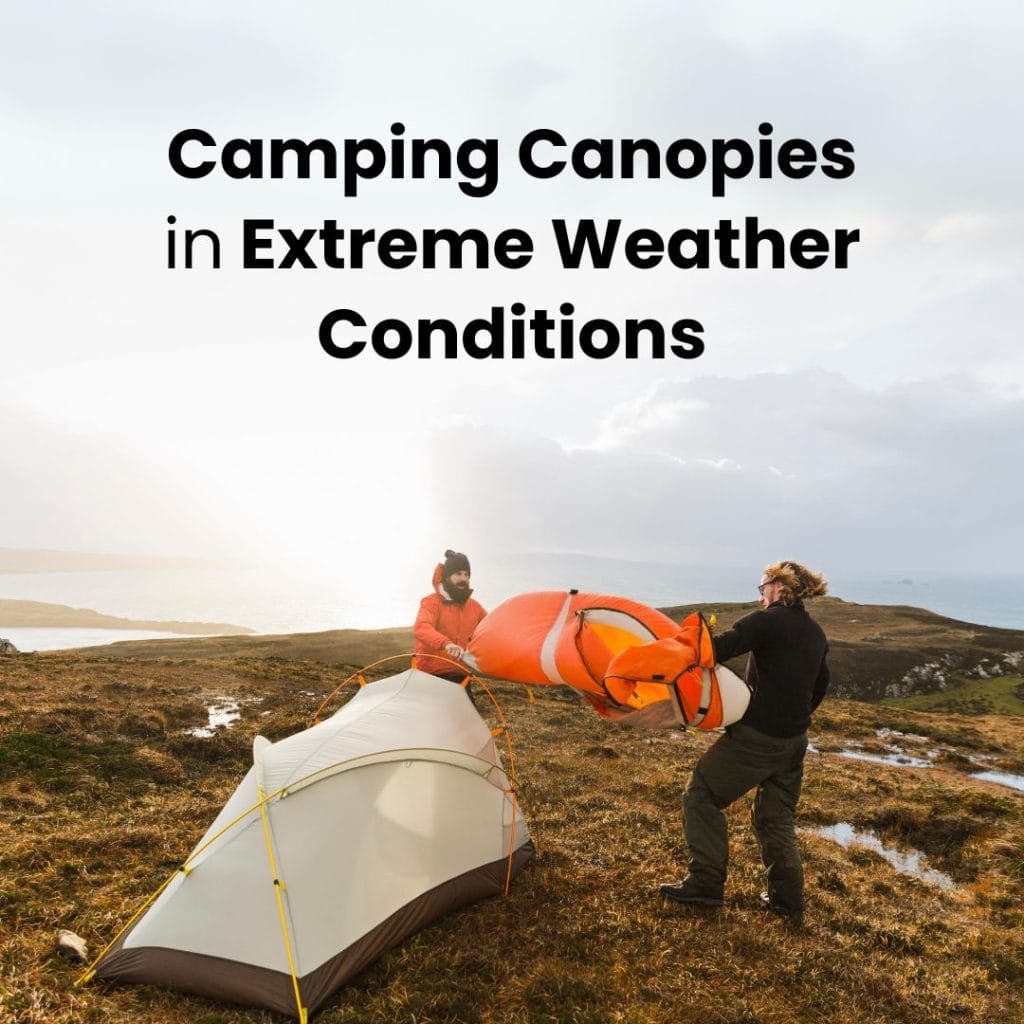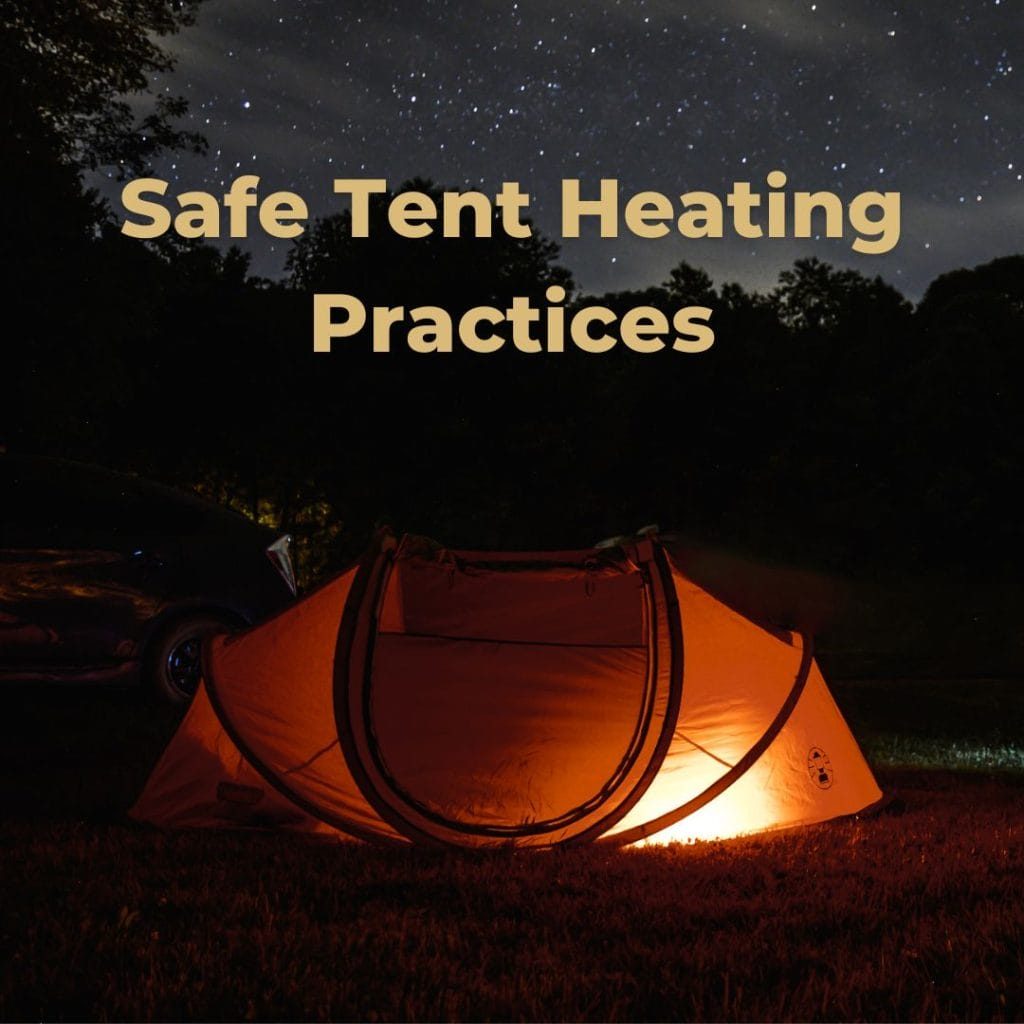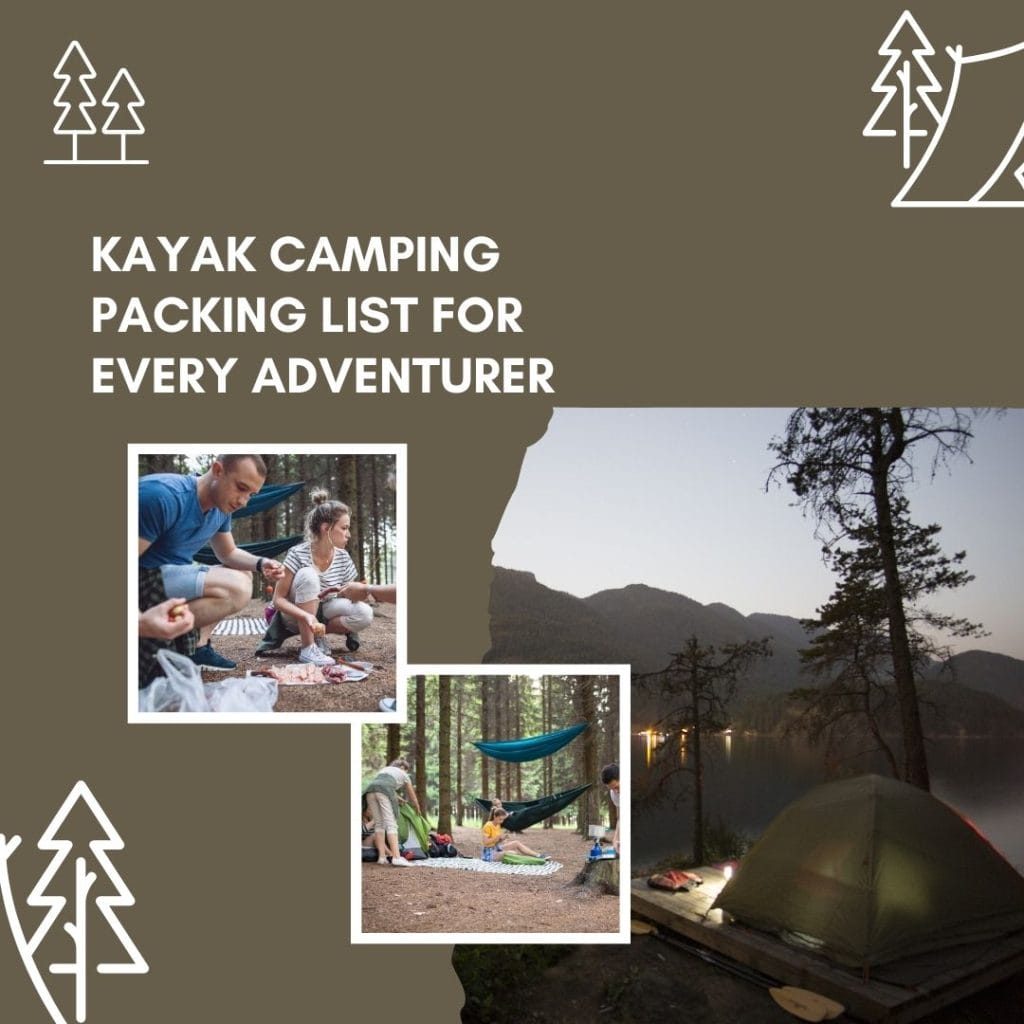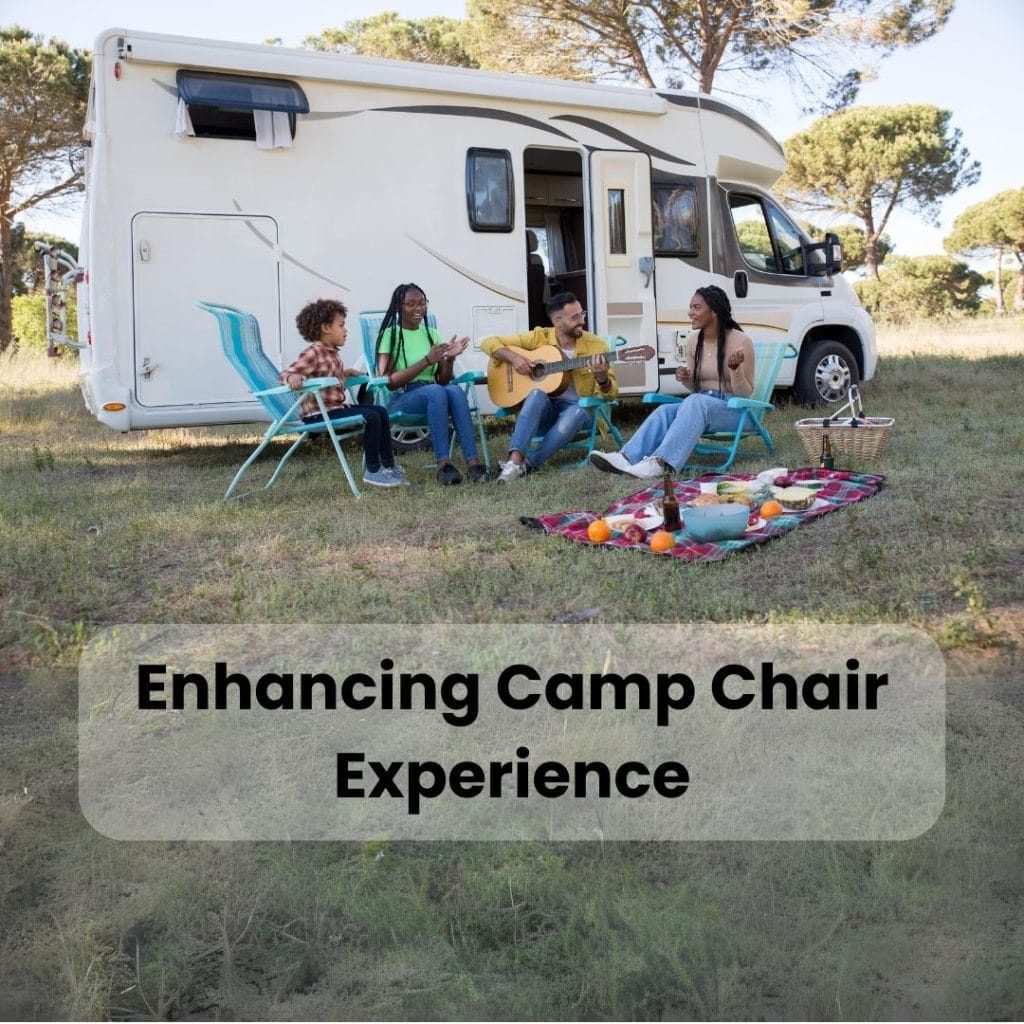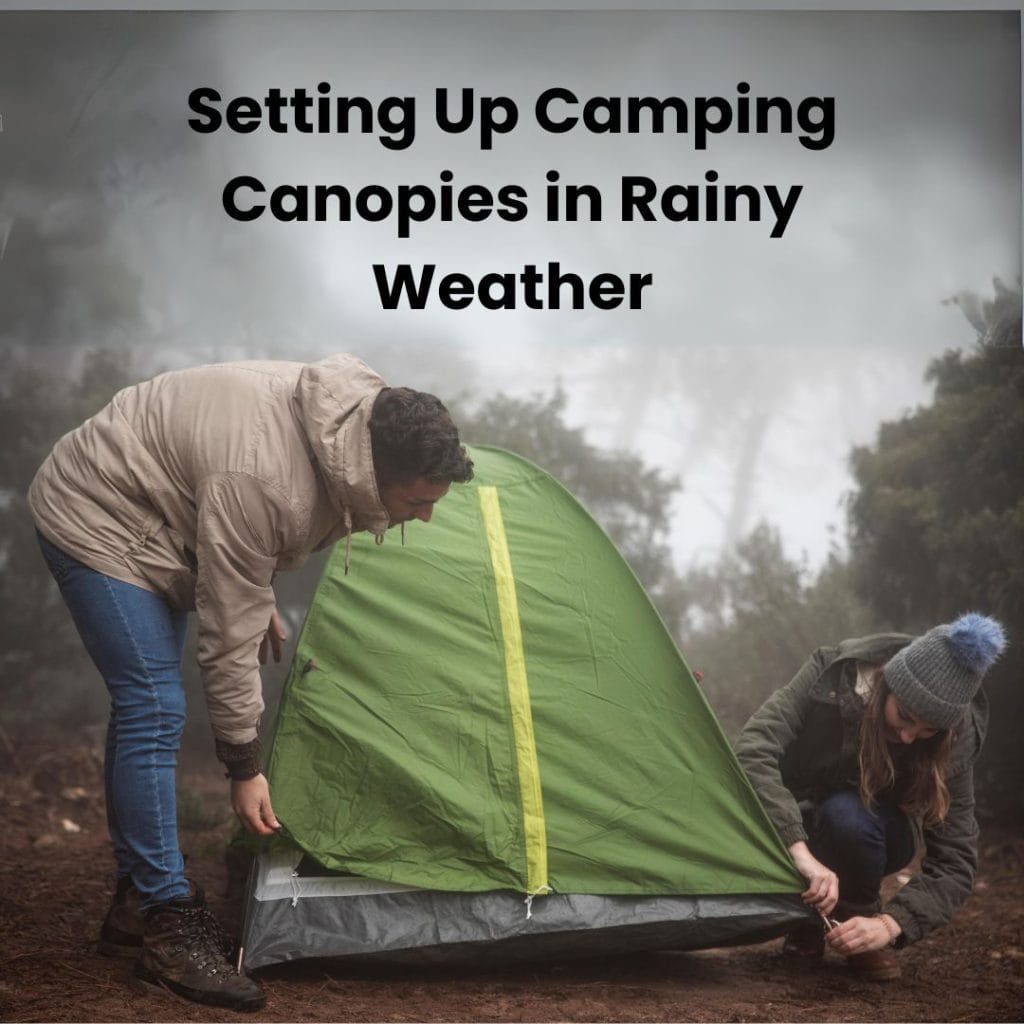Camping, an activity cherished by many, is a gateway to the great outdoors—a chance to escape the hustle of daily life and immerse oneself in the tranquility of nature. Whether it’s a serene solo trip or a jovial gathering with friends and family, camping offers a unique blend of adventure and relaxation. However, the difference between a memorable excursion and a challenging ordeal often hinges on one crucial aspect: comfort.
Join us as we embark on this journey to uncover the essentials of camping comfort, ensuring that your next outdoor adventure is as enjoyable and comfortable as possible. Whether you’re a seasoned camper or planning your first expedition, this guide is your compass to a delightful and comfortable camping experience.
The Role of Shelters in Camping Comfort
Camping is a beloved activity that allows us to connect with nature and escape the hustle of daily life. At the heart of a successful camping trip is the shelter—a critical component that can greatly influence your overall experience. The importance of choosing the right shelter cannot be overstated, as it serves as your primary defense against the elements and your sanctuary in the wilderness. In this article, we’ll explore why selecting the appropriate shelter is crucial for different camping environments and how it contributes to your comfort and safety.
Why the Right Shelter Matters
The choice of shelter directly impacts your comfort, safety, and enjoyment during a camping trip. A well-chosen shelter provides:
- Protection from Weather: The primary function of a shelter is to protect you from the elements—be it scorching sun, pouring rain, biting cold, or gusty winds.
- Comfort and Rest: After a day full of activities, a comfortable shelter offers a place to rest and recharge.
- Privacy and Security: A shelter offers a sense of privacy and security in the great outdoors, which is crucial for a relaxing experience.
- Storage Space: It acts as a storage space for your gear, protecting it from weather and wildlife.
Choosing the Right Shelter for Different Environments
Mountainous Regions:
- Necessity for Sturdiness: In mountainous areas, you need a robust shelter that can withstand strong winds and heavy snow. Four-season tents, with their sturdy build and weather-resistant features, are ideal.
- Temperature Regulation: The ability to retain warmth in cold temperatures is crucial.
Forest and Woodlands:
- Protection from Insects: A shelter with good ventilation and bug-proof mesh windows is essential to keep insects at bay.
- Camouflage and Sensitivity to Environment: Opt for shelters that blend with the surroundings and have a minimal environmental footprint.
Beach and Coastal Areas:
- UV Protection and Ventilation: Shelters with UV-resistant materials and ample ventilation are key to staying comfortable in the sunny, humid beach environment.
- Sand Anchors: Stability in sandy terrain is important; thus, tents with sand anchors or weights are preferable.
Deserts:
- Lightweight and Breathable: Due to extreme temperatures, a shelter that is lightweight for easy transportation and breathable to allow airflow is necessary.
- Sun Protection: UV protection is a must in these sun-drenched environments.
Rainforests and Wet Climates:
- Waterproof and High Humidity Tolerance: A waterproof shelter with a high hydrostatic head rating ensures dryness in heavy rains. Additionally, materials that resist mold and mildew are beneficial.
The Role of Advanced Features
Modern shelters come equipped with features that enhance camping comfort:
- Weather-Specific Additions: Things like rainfly for rain protection, snow skirts for snowy conditions, and UV coatings for sunny areas.
- Room Dividers and Vestibules: For privacy and extra storage.
- Eco-Friendly Materials: To reduce environmental impact.
Different Types of Camping Shelters: From Tents to Canopies
Camping is an experience that connects us with nature, offering a break from the fast-paced world. However, the key to a great camping trip lies in choosing the right shelter. Different environments and camping styles call for different types of shelters. Whether you’re adventuring solo, with family, friends, or even your furry companions, there’s a shelter out there to suit your needs. Let’s explore the various types of camping shelters to help you make the best choice for your next outdoor adventure.
1. Traditional Camping Tents
Traditional camping tents are the most popular choice for shelter. They range from small, lightweight designs ideal for backpackers to larger, more luxurious options for those who like a bit of extra space. When selecting a traditional tent, consider the size, weather resistance, and ease of setup.
- a) 8 Person Tents for Camping: For group camping or families, 8 person tents are ideal. They provide ample space for sleepers and additional room for storage or a common area to socialize. These tents often come with room dividers for privacy and large windows for ventilation.
- b) Tent for Beach Camping: Beach camping requires tents that can withstand strong winds and provide UV protection. Look for tents with sturdy poles, sand anchors, and breathable fabrics to enjoy a comfortable beach camping experience.
2. Camping with Dogs
If you’re bringing your canine companion, consider tents designed for camping with dogs. These tents usually feature durable materials to withstand claws and teeth, and extra space or compartments for your pet to sleep comfortably. Look for tents with good ventilation and easy access to keep your furry friend happy.
3. Screen Tents for Camping
Screen tents are perfect for campers who want to enjoy the outdoors without the annoyance of insects. These tents come with mesh walls that allow for air circulation while keeping bugs out. They’re ideal for dining, socializing, or just relaxing without the hassle of mosquitoes.
4. Camper Vans and RVs
For those who prefer a home-on-wheels, camper vans and RVs offer a more luxurious camping experience. They provide the comforts of home, such as beds, kitchens, and sometimes even bathrooms. This type of shelter is ideal for long trips or for those who prefer not to sleep under the stars.
5. Camping Canopies for Rain
Camping canopies are essential for camping in rainy conditions. They provide a dry area to relax, cook, and socialize. When choosing a canopy, look for one with waterproof materials, sturdy construction, and easy setup. Some canopies are designed with sidewalls for extra protection against the elements.
6. Hammocks and Bivy Sacks
For the minimalist camper, hammocks and bivy sacks offer a lightweight and unique camping experience. Hammocks are great for relaxing and sleeping under the stars, while bivy sacks provide a small, weather-resistant shelter for solo campers.
Special Considerations for Shelter Selection in Camping
Selecting the right shelter is crucial to ensure a comfortable and safe camping experience. The variety of camping shelters available today cater to different needs, but choosing the right one goes beyond just personal preference. Several factors such as weather conditions, terrain, space requirements, and the specific nature of your camping trip play a pivotal role. This article delves into these key considerations to help you make an informed decision when selecting your camping shelter.
1. Weather Conditions
Weather is perhaps the most critical factor in choosing a camping shelter.
- For Sunny and Warm Climates: Look for shelters with ample ventilation, UV protection, and lighter colors to reflect sunlight.
- For Rainy Conditions: Your shelter should be waterproof with a good hydrostatic rating. Consider shelters with a sturdy rainfly and waterproof seams.
- For Windy Environments: Opt for a shelter with a low profile and strong poles. Geodesic or semi-geodesic tents are great in windy conditions.
- For Cold Weather: Choose a four-season tent with fewer mesh panels and the ability to withstand snow loads.
2. Terrain Considerations
The type of terrain you will be camping on influences the kind of shelter suitable for your trip.
- Rocky or Uneven Ground: A freestanding tent is ideal as it doesn’t require stakes to set up.
- Sandy Terrain: Tents with sand anchors or weights are preferable for beach camping.
- Forested Areas: Hammocks can be a good choice, provided you have trees to support them.
3. Space and Capacity Needs
The size of your group and the amount of gear you carry are crucial in determining the size of your shelter.
- Solo or Duo Campers: A one or two-person tent is sufficient, offering a balance between space and compactness.
- Family or Group Camping: Larger tents with room dividers or multiple rooms provide privacy and space.
- Extra Gear Storage: Look for tents with vestibules or enough interior space to store your equipment.
4. Ease of Setup
The complexity of setting up your shelter can impact your camping experience, especially after a long day of hiking or in bad weather.
- Quick Trips: Instant tents or pop-up shelters are great for short stays.
- Extended Camping: Traditional tents with more stability and features might be worth the longer setup time.
5. Weight and Portability
Your mode of transportation to the campsite will dictate how much weight you can carry.
- Backpacking: Lightweight and compact shelters are essential.
- Car Camping: Weight is less of an issue, allowing for larger, more feature-rich shelters.
6. Durability and Quality
Investing in a high-quality shelter that can withstand various conditions is crucial for frequent campers.
- Look for durable materials, sturdy poles, and quality craftsmanship.
- Check reviews and ratings for long-term durability insights.
7. Environmental Impact
Consider eco-friendly shelters made from sustainable materials and designs that minimize the impact on the camping site.
Importance of Proper Seating in Camping: Relaxation and Health Benefits
When planning a camping trip, many focus on the essentials like shelter and food, often overlooking one key aspect of outdoor comfort: proper seating. While it might seem trivial, the role of seating in camping cannot be understated. It’s not just about having a place to sit; proper seating can significantly enhance your relaxation and have positive effects on your health during your camping adventure. In this article, we delve into why investing in good seating is crucial for a fulfilling camping experience.
The Role of Seating in Camping
Comfort and Relaxation:
- After a day full of activities like hiking, fishing, or exploring, your body needs a comfortable place to unwind.
- Proper seating provides the necessary support and comfort, allowing you to relax and soak in the natural surroundings.
Health Benefits:
- Posture Support: Good seating supports proper posture, preventing back and neck pain that can arise from prolonged sitting on hard or uneven surfaces.
- Circulation: Elevated seating, as opposed to sitting directly on the ground, can aid in better blood circulation, especially important in cooler camping environments where blood circulation can decrease.
Social Interaction:
- Camping often involves group activities. Comfortable seating fosters a communal atmosphere around the campfire, during meals, or simply when sharing stories.
Choosing the Right Camping Chair
- Ergonomics: Look for chairs that offer lumbar support and are designed to support natural body posture.
- Portability and Durability: Camping chairs should be easy to carry and durable enough to withstand outdoor elements.
- Material: Breathable and weather-resistant fabrics are ideal, providing comfort and longevity.
- Additional Features: Features like cup holders, headrests, or reclining options add to the overall comfort.
Alternative Seating Options
- Hammocks: They provide a relaxing way to lounge and can be a great addition to traditional chairs.
- Camping Stools: For those who prefer minimalistic camping, lightweight stools are a portable and space-saving option.
The Psychological Impact
- Relaxation and Stress Reduction: Comfortable seating allows for a more relaxed state, which can reduce stress and enhance the overall camping experience.
- Connection with Nature: Proper seating encourages longer periods of sitting outdoors, facilitating a deeper connection with nature.
Choosing the Right Camp Chairs: A Guide to Durability, Comfort, and Portability
Camping chairs are an essential component of outdoor gear, providing comfort and convenience in the wilderness. However, with the myriad of options available, choosing the right camp chair can be a daunting task. A good camp chair strikes a balance between durability, comfort, and portability, but there are additional features to consider, especially for specific needs like accommodating larger body types or ensuring ergonomic support for extended comfort. Let’s delve into what makes a great camp chair and how to select the perfect one for your next outdoor adventure.
Key Features of a Good Camp Chair
Durability:
- Material: Look for chairs made with robust materials, like heavy-duty polyester or rip-stop nylon, and sturdy frames made of steel or aluminum.
- Construction: The build quality should withstand the rigors of outdoor use, including resistance to wear and tear.
Comfort:
- Design: Chairs should provide ample back and seat support. Padded seats and backrests add an extra layer of comfort.
- Breathability: Chairs with mesh panels promote air circulation, reducing sweat and discomfort in warmer climates.
Portability:
- Weight: A lightweight chair is easier to carry, especially important for backpacking or when you have to walk to your campsite.
- Foldability: Chairs that fold up compactly make transportation and storage more convenient.
Special Considerations
Camp Chairs for Big Guys:
- Reinforced Structure: Chairs designed for larger individuals should have a stronger frame and reinforced joints.
- Wider Dimensions: Look for chairs with broader seats and backs for added comfort.
- Higher Weight Capacity: Ensure the chair can support a higher weight limit safely.
Benefits of Heavy-Duty Camp Chairs for Rugged Camping:
- Enhanced Durability: These chairs are built to withstand harsh conditions, making them ideal for rugged camping trips.
- Stability: Heavy-duty chairs often have wider feet or additional stabilization features for uneven terrain.
Importance of Ergonomics in Camp Chairs:
- Posture Support: Ergonomic chairs are designed to support your body correctly, reducing the risk of discomfort or strain.
- Adjustability: Features like adjustable backrests or armrests allow you to customize the chair for your comfort.
Additional Features to Consider
- Extra Amenities: Cup holders, side pockets, and headrests add convenience and comfort.
- Style and Design: Chairs come in various styles and colors, allowing you to choose one that suits your personal preference or matches other camping gear.
Enhancing Your Seating Experience: Accessories and Tips for Maximum Comfort in Camp Chairs
A camp chair is more than just a place to sit; it’s a cornerstone of comfort in the great outdoors. But why stop at just the basics? With the right accessories and tips, you can transform your camp chair into a haven of relaxation and convenience. Whether you’re gazing at the stars, sharing stories around a campfire, or simply enjoying the tranquility of nature, enhancing your camp chair can significantly improve your camping experience. Let’s explore the various ways to elevate your comfort level with your camp chair.
Key Accessories for Camp Chairs
Chair Pads and Cushions:
Add a layer of comfort with portable, weather-resistant chair pads or cushions. They provide extra padding, making the seating experience more enjoyable, especially during extended periods.
Clip-On Side Tables:
A clip-on side table offers a convenient place for your snacks, drinks, book, or other small items. It keeps essentials within arm’s reach, enhancing the functionality of your camp chair.
Footrest Attachments:
Elevate relaxation with a footrest attachment. It helps in reducing leg fatigue and adds an extra level of comfort, especially for those longer camping trips.
Chair Umbrellas or Canopies:
Protect yourself from the sun and light rain with a chair umbrella or canopy. These attachments are perfect for enjoying the outdoors while staying shielded from the elements.
Portable Heating Pads:
For colder camping environments, portable heating pads can be a game-changer. They provide warmth and comfort, making your camp chair cozy even in chilly weather.
Tips for Maximizing Camp Chair Comfort
Proper Placement:
Find a level spot to place your chair to avoid wobbling or unevenness, which can lead to discomfort.
Adjustable Features:
Make use of any adjustable features your chair might have, like reclining backs or movable armrests, to find the perfect sitting position.
Pair with an Ottoman:
If your chair doesn’t have a footrest, consider pairing it with a portable ottoman. It not only adds to the comfort but also aids in circulation.
Use a Blanket:
For extra coziness, drape a blanket over your chair. It’s perfect for cooler evenings and adds a touch of homeliness to your campsite.
Maintain Your Chair:
Regular maintenance, like cleaning and checking for any wear and tear, ensures your chair remains comfortable and safe to use for a long time.
Protective Gear for Various Weather Conditions: Essential Items for a Safe Camping Experience
Camping can be an exhilarating experience, allowing you to connect with nature in its purest form. However, the unpredictability of weather can pose significant challenges. Being prepared with the right protective gear is crucial to ensure safety and comfort, regardless of the weather conditions you might face. This article highlights essential items that provide protection against rain, cold, and extreme weather conditions, ensuring that your camping adventure is enjoyable and safe.
Gear for Rain Protection
Waterproof Clothing:
- Invest in high-quality waterproof jackets and pants. Look for breathable fabrics to prevent overheating.
- Choose clothing with sealed seams and adjustable cuffs for added protection.
Rain Boots and Gaiters:
- Waterproof boots are essential to keep your feet dry. Pair them with gaiters to prevent water from seeping into your boots.
Waterproof Backpack Covers:
- Protect your gear with waterproof covers for your backpack. They are lightweight and can be easily stored when not in use.
Ponchos and Rain Hats:
- For lighter rain and drizzle, a poncho can be more convenient than a jacket. A rain hat with a brim will keep the rain off your face.
Cold Weather Gear
Insulated Clothing:
Layering is key in cold weather. Start with a moisture-wicking base layer, add an insulating mid-layer, and finish with a windproof and waterproof outer layer.
Thermal Gloves and Socks:
Thermal gloves and wool or thermal socks are essential to keep your extremities warm.
Beanies and Neck Gaiters:
A significant amount of body heat is lost through the head, so a beanie is crucial. Neck gaiters provide warmth and can be pulled up to cover your face in harsh conditions.
Portable Heaters:
For extreme cold, portable heaters can be used in well-ventilated areas or outside the tent for warmth.
Gear for Extreme Weather Conditions
UV Protection:
- In extreme sunny conditions, UV-protective clothing, sunglasses, and broad-spectrum sunscreen are necessary to prevent sunburn.
Windbreakers:
- Lightweight and durable windbreakers are essential in high-wind conditions to protect against chills.
Emergency Shelter:
- In extreme and unpredictable weather, carrying an emergency shelter like a bivy sack or a space blanket can be a lifesaver.
Hydration and Nutrition:
- Extreme weather can take a toll on your body. Ensure you have enough water and energy-rich foods.
Heating and Weatherproof Solutions for Camping: Staying Warm and Dry in the Outdoors
Camping in varying weather conditions can be challenging, but with the right heating and weatherproof solutions, you can ensure comfort and safety. Whether you’re battling the cold in a camper van, pitching a tent in the rain, or setting up camp in extreme weather, being prepared is key. This article explores various options and techniques for staying warm and dry, focusing on heaters for different camping scenarios and the effective use of camping canopies.
Heaters for Camping
Heater for Camper Van:
- Safety First: Choose heaters specifically designed for camper vans. Vent-free propane heaters with low oxygen shut-off systems are a popular choice.
- Electric Heaters: If you have access to electricity, portable electric heaters are a safe and efficient option.
Heater for Tent Camping:
- Portable Gas Heaters: These are suitable for tent camping but require proper ventilation to prevent carbon monoxide buildup.
- Battery-Powered Heaters: A safer alternative, although less powerful, they provide heat without the risk of fumes.
Weatherproof Gear and Techniques
Waterproof Clothing and Accessories:
- Invest in waterproof and breathable jackets, pants, and boots. Don’t forget waterproof gloves and hat for complete protection.
Tarps and Footprints:
- Place a tarp under your tent as a footprint to prevent moisture from seeping up. Another tarp over your tent can provide additional rain protection.
Camping Canopies in Rainy and Extreme Weather
Setting Up Camping Canopies in Rainy Weather:
- Location: Choose a higher ground location to avoid water pooling.
- Anchoring: Secure the canopy firmly with stakes and ropes to withstand wind and rain.
- Water Drainage: Tilt the canopy slightly to one side to encourage water runoff and prevent pooling on top.
Using Camping Canopies in Extreme Weather Conditions:
- Reinforced Canopies: For extreme conditions, opt for canopies made with heavy-duty materials and reinforced poles.
- Windbreaks: Add side panels or windbreaks to protect against strong winds and sideways rain.
- Regular Checks: Regularly check and adjust the tension and positioning of the canopy to cope with changing weather conditions.
Kayak Camping: A Unique Blend of Paddling and Wilderness
Kayak camping is an adventurous and unique way to explore the great outdoors, combining the joys of kayaking and camping. This activity allows you to access remote waterways and camping spots that are often unreachable by foot or car. However, kayak camping requires specific considerations and gear, different from traditional camping. This article covers everything from choosing the best kayak for camping to essential gear and tips, culminating in the ultimate kayak camping packing list for every adventurer.
Choosing the Best Kayak for Camping
Storage Capacity:
- Look for kayaks with ample storage space for camping gear. Sea kayaks often offer the best capacity for extended trips.
Stability and Comfort:
- Stability is key, especially when carrying gear. Opt for kayaks with a wider hull. Comfortable seating is also crucial for long paddling hours.
Durability:
- Durable materials are essential for withstanding different water conditions and potential impacts with rocks or debris.
Essential Gear for Kayak Camping
Dry Bags and Waterproof Cases:
- Protect your gear from water with dry bags and waterproof cases. This is essential for items like clothing, electronics, and sleeping gear.
Portable Shelter:
- Lightweight and compact tents, tarps, or hammocks are ideal for kayak camping due to limited storage space.
Cooking Equipment:
- Compact stoves, multi-use utensils, and dehydrated meals save space and weight but still allow you to enjoy warm meals.
Safety Equipment:
- Always include a life jacket, first aid kit, navigation tools, and communication devices for safety.
Tips for a Successful Kayak Camping Adventure
Plan Your Route:
- Research the waterways you plan to navigate, including potential camping spots, water conditions, and weather forecasts.
Pack Strategically:
- Balance is crucial. Distribute weight evenly in the kayak and keep frequently used items within easy reach.
Practice Low-Impact Camping:
- Respect the environment by practicing Leave No Trace principles. This includes proper waste disposal and minimizing your impact on the natural surroundings.
The Ultimate Kayak Camping Packing List
Shelter and Sleeping Gear:
- Tent or hammock, sleeping bag, sleeping pad, and an emergency shelter or bivy.
Clothing:
- Quick-dry clothing, layers for warmth, rain gear, hat, gloves, and sturdy water shoes.
Food and Water:
- Enough food for your trip plus extra, water filter or purification tablets, and a collapsible water container.
Navigation and Communication Tools:
- Maps, compass, GPS device, and a waterproof case for your phone or VHF radio.
Additional Items:
- Sun protection, insect repellent, headlamp or flashlight, multi-tool, and personal items.
Cooking and Food Preparation in Camping: The Importance of Choosing the Right Gear
When embarking on a camping trip, meals are not just a necessity; they’re a central part of the experience. Cooking in the great outdoors, however, comes with its unique set of challenges. This is where the importance of choosing the right cooking gear comes into play. Having the appropriate equipment can transform your campsite meals from mere sustenance to delightful culinary experiences. Let’s explore why selecting the right cooking gear is essential for a successful camping adventure.
The Role of Cooking Gear in Camping
Efficiency and Convenience:
- The right gear can significantly reduce cooking and preparation time, allowing you to spend more time enjoying the outdoors.
- Compact and multi-use tools are especially valuable in a camp setting where space is limited.
Safety and Reliability:
- Outdoor cooking involves open flames and unpredictable elements. High-quality, durable gear ensures safety and reliability in these conditions.
- Stability in cookware and stoves is crucial to prevent accidents and injuries.
Enhancing the Camping Experience:
- Good food is often a highlight of any camping trip. The right gear allows you to prepare a variety of meals, elevating the overall camping experience.
Essential Cooking Gear for Camping
Portable Stove or Grill:
- A portable stove is a must-have for camp cooking. Choose between propane, butane, or dual-fuel models depending on your needs and the length of your trip.
- For those who prefer grilling, a compact, portable grill can be a great addition.
Quality Cookware:
- Non-stick, durable cookware that is easy to clean will make camp cooking much more manageable.
- Consider nesting pots and pans to save space.
Utensils and Cutlery:
- Opt for utensils that are heat-resistant, easy to clean, and can be used for multiple purposes.
- Collapsible or folding cutlery and serving tools are space-efficient options.
Food Storage and Preservation:
- Coolers or portable refrigerators are crucial for keeping perishables fresh.
- Airtight containers and resealable bags help keep food safe and organized.
Tips for Successful Camp Cooking
Plan Your Meals:
Plan and pre-prepare meals as much as possible. Consider meals that are easy to cook and require minimal ingredients.
Pack Smart:
Bring only what you need. Space-saving and multi-functional items are key.
Practice Safe Food Handling:
Keep raw and cooked foods separate and ensure proper food temperatures are maintained to prevent foodborne illnesses.
Leave No Trace:
Be mindful of the environment. Dispose of waste properly and minimize your impact on the natural surroundings.
Conclusion
In conclusion, the essentials of camping comfort—shelter, seating, and protection—play a pivotal role in transforming a regular camping trip into an extraordinary outdoor experience. Choosing the right shelter ensures safety and restful nights, while proper seating provides the much-needed relaxation and ergonomic support. Protection against varying weather conditions is crucial to stay comfortable and safe. By giving thoughtful consideration to these elements, campers can elevate their outdoor adventures, ensuring each camping trip is not just about surviving the elements, but thriving in them and creating lasting memories. Remember, the great outdoors is yours to enjoy, and with the right preparation, every camping excursion can be a harmonious blend of adventure, comfort, and serenity.

